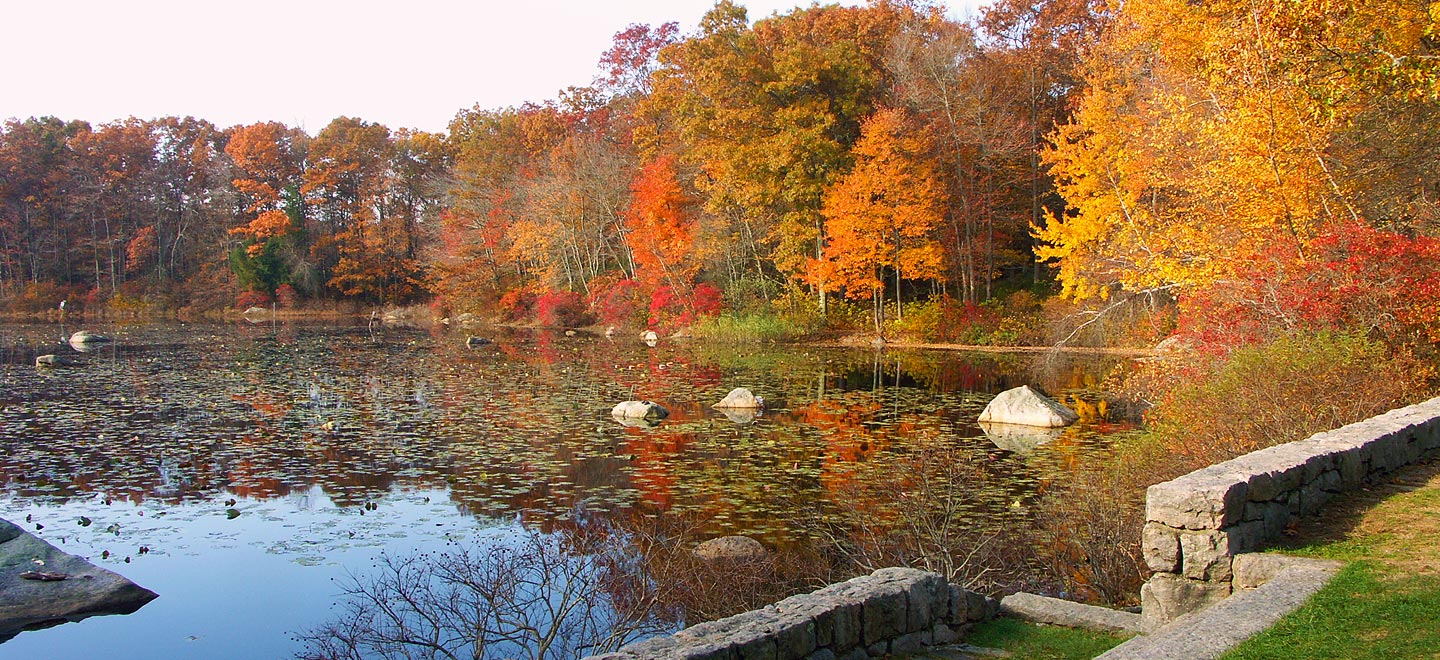The Arboretum is one of the primary elements that sets Connecticut College apart from its NESCAC (New England Small College Athletic Conference) competitors. Its beautiful 770 acres is divided into three different categories: plant collections, managed areas, and conservation plots. By dividing the land, the Arboretum can benefit many causes. The plant collections are display pieces for the purpose of beauty and exposing the diversity of the plant kingdom in a given region (Eastern United States). The managed areas are primarily for research: professors and students can test different controlling methods, like burning or pesticides. The conservation areas are for observing how different species move in and out of a plot of land. There are some ongoing studies that have tracked the development of different species – primarily trees and birds – for fifty years. These are essential studies for better understanding the ecosystems around us.
The Arboretum is a gift open to the public and to the Connecticut College community. With privilege comes responsibility. There are few rules in the Arboretum, but the existing ones are important to follow. The primary rule is to run or bike in specific areas of the Arboretum. There are signs posed at the entrance to all the plant collections and conservation areas that indicate that they are restricted for running; this includes the Native Plant Collections and Mamacoke Island. Only one managed area is free to heavy traffic of jogging: below Route 32 and above the railroad tracks. This rule banning speedy movement may seem arbitrarily applied, but it essential for soil and plant health.
Despite sign postings of rules, Groundsperson Kraig Clark, says, “I’ve seen the trails get deeper and wider in the time I’ve been here.” He has worked on the Arboretum crew for three years. Leigh Knuttle, Horticulturist, explains, “There is sensitive vegetation along the side of the trails.” When individuals pound their feet, or bike tires, onto the path below, they are compressing the soil.
Soil, where plants sink their roots, is composed of inorganic minerals (generally from broken down rocks into various sizes), organic matter (like fallen leaves), air, and water. Each particle of organic or inorganic matter is surrounded first by water then by air. In a dry season, the air cushion will be greater, and similarly, in a wet season, the surrounding water will be greater. Each plant’s roots are weaved in the airspace between these clumpy particles of matter and water. Essential minerals transfer from the particles to the roots. When the soil is compressed, the particles are pounded together and the air space becomes limited. The roots have less space into which they can grow, and consequently, access fewer water and minerals.
Another issue with soil compaction is surface damage. When the soil is compressed, a chain of events occurs. Because the air pockets have been pressed out of the soil, there is nowhere for rain to be absorbed. As a result, it “runs across the surfaces, limiting the amount of water to the plants’ roots below,” Knuttle related. While rushing across the surface, the water picks up all sorts of loose items, and washes it all downhill. Depending on the amount of water, the erosion can be drastic. Having picked up all loose soil, roots that previously existed underground become exposed to foot traffic. The roots are stepped on and damaged. So now, the water-deprived roots have less functioning tissue in which they can transport water and integrated mineral nutrients to the growing part of the plant. With less essential ingredients, the plant becomes more susceptible to insects and pathogens. It is an avoidable downward spiral.
The Arboretum staff actively tries to maintain the beauty of the Arboretum, and with this comes the task of mitigating soil compaction. Brian Goulet, Senior Groundsperson, listed ways this is done: “Layering of mulch on paths, adding switchbacks on hill trails, and placing log bar ways” are steps to increase traction.
As much damage as they prevent, the grounds crew still struggles with the impact of heavy foot traffic. The pounding of runners and bikers is negatively impacting the plants’ health, causing them to die. Some of Goulet’s frustration stems from the lack of understanding of the intention of the place; an arboretum is a collection of trees, like a living museum. It is not a park. This resource is open for people to enjoy. It is “supposed to be for reflection and research.” Knuttle concludes, “Be aware – there are sensitive plants and research that has been going on for 50 years. A lot can be undone because of too much compaction.” •










